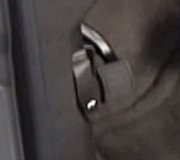Good evening,
What fuse number is the one that is failing? ATC is the power for the encoder motor. Disconnect the motor and see if the fuse still fails.
Roy
C0327
Circuit Description
The transfer case encoder is a switch that converts a shaft position, representing a mode or range position, into electrical signals for use by the transfer case shift control module. The encoder houses 4 Hall effect sensors that are used for channels P, A, B, and C. These sensors provide a path to ground, when a magnet, (part of the Motor Encoder), passes over them.
The transfer case shift control module supplies an 8 V reference and a ground circuit for the encoder hall effect sensors to function.
The transfer case shift control module supplies current limited 5 V on all the channels, thus as these channels are pulled to ground, the module can interpret the location of the transfer case shift position.
This DTC detects an open, short to ground, or a short to voltage (12 V) in the Encoder Feed Circuit, an open in the Signal Ground Circuit, an open, short to ground, or short to voltage (12 V) in the Encoder channel circuits.
Conditions for Setting the DTC
The transfer case shift control module reads back all high or low voltage on the Encoder channel circuits.
Action Taken When the DTC Sets
All motor activity will stop and the Transfer Case Lock engaged.
A default rail to rail shift may be allowed, (toggle between 4H and 2H).
The SERVICE indicator (4WD/AWD) lamp will be latched on for the remainder of the current ignition cycle.
Conditions for Clearing the DTC
The transfer case shift control module will clear the DTC if the condition for setting the DTC no longer exists.
A history DTC will clear after 100 consecutive ignition cycles without a fault present.
History DTCs can be cleared using a scan tool.
Test Description
The number(s) below refer to the step number(s) on the diagnostic table.
2. Tests the operation of the system.
3. Helps determine if the encoder has supply voltage.
4. Tests the encoder channels for proper reference voltage.
5. Tests the encoder channels for an open or a short to power.
6. Measures the voltage from the Encoder Feed circuit to the Encoder Signal Ground circuit.
7. Tests for two or more encoder channels shorted together.
8. Bypasses the encoder and tests each encoder channel individually. Helps isolate between encoder and module malfunctions.
9. Tests the suspect encoder channel(s) for an open.
10. Tests the encoder channels for proper reference voltage.
11. Helps determine if the Encoder Signal Ground circuit is shorted to voltage.
12. Tests the Encoder Feed circuit for a short to voltage.
13. Tests the Encoder Signal Ground circuit for high resistance or an open.
14. Tests the Encoder Feed circuit for an open.
15. Repairs shorted condition between the circuits that were simultaneously turned ON in Step 6.
16. Tests the encoder channel(s) that are not within the specified range previously tested in Step 9 for an open circuit.
C0387
Circuit Description
The transfer case encoder is a switch that converts a shaft position, representing a mode or range position, into electrical signals for use by the transfer case shift control module. The encoder houses 4 Hall effect sensors that are used for channels P, A, B, and C. These sensors provide a path to ground, when a magnet, (part of the Motor Encoder), passes over them.
The transfer case shift control module supplies an 8 V reference and a ground circuit for the encoder hall effect sensors to function.
The transfer case shift control module supplies current limited 5 V on all the channels, thus as these channels are pulled to ground, the module can interpret the location of the transfer case shift position.
This DTC detects that the transfer case is unable to successfully complete a shift to a requested mode or range.
Conditions for Setting the DTC
The transfer case shift control module will test the motor circuits and determine that there are no motor circuit faults existing.
The transfer case shift control module has attempted to shift to a requested mode/range and has failed to reach the desired position.
The transfer case shift control module has performed a default shift to 4LO or 4HI.
Action Taken When the DTC Sets
The SERVICE indicator (AWD/4WD) lamp will be latched on for the remainder of the current ignition cycle.
All shifting will be disabled.
The range/mode lights will be disabled
The next ignition cycle, the transfer case shift control module will power-up as if the 4HI was the mode present when the ATC was powered down.
Conditions for Clearing the DTC
The transfer case shift control module will clear the DTC if the condition for setting the DTC no longer exists.
A history DTC will clear after 100 consecutive ignition cycles without a fault present.
History DTCs can be cleared using a scan tool.
Test Description
The numbers below refer to the step numbers on the diagnostic table.
2. Tests whether the transfer case shift control module is sensing any change in all of the encoder channels.
3. Helps determine whether the shift is prevented due to a mechanical fault.
4. Tests whether the transfer case shift control module is sensing any change in any of the encoder channels.
5. Tests if proper reference voltage is being supplied to the encoder from the suspect circuit.
6. Helps determine whether a short between 2 or more encoder circuits exist.
7. Tests the suspect encoder circuit for the module's ability to sense the circuit going low.
8. Helps determine whether the shift is prevented due to a mechanical fault.
9. Tests for the electrical energizing of the encoder motor.
10. Tests the suspect circuit(s) for an open or a short to power.
11. Tests for short between the suspect circuits.
Image (Click to make bigger)
Tuesday, December 10th, 2019 AT 3:51 PM






